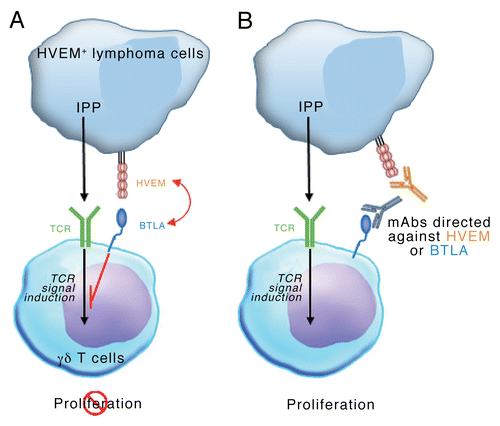Figures & data
Figure 1. Lymphoma cells may regulate intranodal Vγ9Vδ2 T-cell expansion via a BTLA- and HVEM-dependent signaling pathway. (A) Isopentenyl pyrophosphate (IPP) produced by cancer cells can be recognized by the Vγ9Vδ2 T-cell receptor (TCR), hence stimulating Vγ9Vδ2 T-cell proliferation. Lymphoma cells expressing the herpesvirus entry mediator A (HVEM) inhibit the trasnduction of Vγ9Vδ2 TCR-elicited signals by interacting with B and T lymphocyte associated (BTLA), hence impeding Vγ9Vδ2 T-cell proliferation. (B) Monoclonal antibodies directed against BTLA or HVEM allow Vγ9Vδ2 T cells to proliferate in spite of the presence of HVEM+ lymphoma cells.
